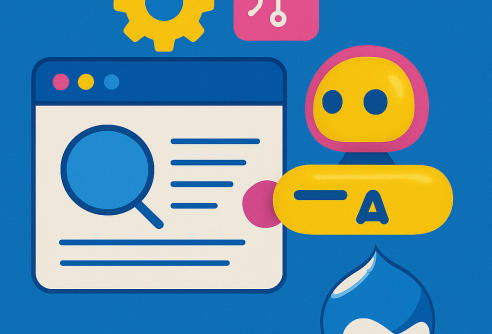Headless Drupal Benefits
Headless Drupal has many benefits and opportunities. It allows for a decoupled CMS which can provide a better user experience, faster performance, and a more scalable architecture. It can also provide a way to easily integrate with other systems and devices.
Decoupling gives you more
A decoupled CMS can provide a better user experience by allowing for a more customized and personalized experience. The front-end can be built using any number of frameworks or libraries, and the back-end can be customized to match the needs of the specific project. This can provide a more seamless experience for the user as they are not limited by the capabilities of the CMS.
Faster performance can be achieved by using a headless approach as the front-end can be built to be as lightweight as possible. This can be beneficial for sites that receive a lot of traffic or need to load quickly on mobile devices.
A more scalable architecture can be achieved by using a headless CMS. This is because the front-end can be built to be independent of the back-end. This means that the back-end can be scaled up or down as needed without affecting the front-end. This can save time and money as the front-end does not need to be rebuilt when the back-end is scaled.
Integration with other systems can be easier with a headless CMS. This is because the back-end can be built to expose an API that can be used by other systems. This can allow for data to be easily synced between systems and devices.
There are many benefits and opportunities that come with using a headless Drupal 8 CMS. It can provide a better user experience, faster performance, a more scalable architecture, and easier integration with other systems.
Who uses Headless Drupal?
Headless Drupal is a powerful tool for developers who need to create powerful, scalable applications. It is also a great choice for those who need to create high-performance, highly-available websites. Headless Drupal can be used to create both traditional web applications and modern, cloud-based applications.
- It is built on top of the Drupal core and uses the same underlying architecture. This means that it is very stable and scalable. It also means that it is easy to extend and customize.
- It is often used to create RESTful web services. These services can be used to expose data to other applications or to create APIs for other developers to use.
- It is also a great choice for creating Single Page Applications (SPAs). SPAs are web applications that load a single HTML page and then dynamically update that page as the user interacts with the application. This makes them very fast and responsive.
- It is a great choice for developers who need to create powerful, scalable applications. It is also a great choice for those who need to create high-performance, highly-available websites.





